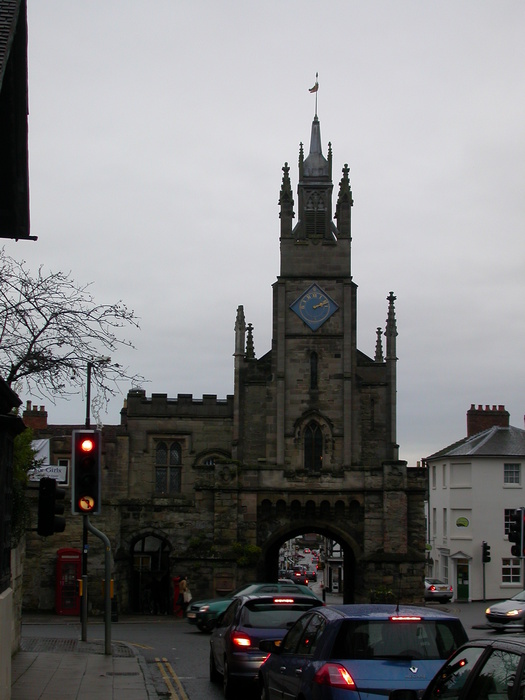
A nice wet walk through the city gates...
This autumn we had a few days' vacation, so we decided to go visit Fluf and Andy in sunny England, and assist them in burning the Guy. If you don't know: Guy Fawkes was one of the revolutionaries who planned to overthrow the protestant government in 1605 by blowing up Parliment. The government was warned, Guy Fawkes was caught, and the protestant government remained in power. The plot was revealed on the 5th of November, and legend has it that bonfires were lit to celebrate the King's surviving the plot on his life. Guy was tortured, but did not reveal the names of his co-conspirators. At least some of them were caught separately a few days later, though, and all were sent to the gallows. Guy jumped from the gallows, thus comitted suicide rather than be hung. The Guy has become something of a folk hero, and something of a folk villan. He is burned in effigy on Guy Fawkes, and sometimes in the company of effigies of currently unpopular political figures. Sometimes he is remembered as the only man to enter Parliment with honest intentions.
Mostly, he is remembered as a good excuse to blow things up.
In addition to blowing up the allotment, we decided to visit a castle. Andy suggested Warwick.
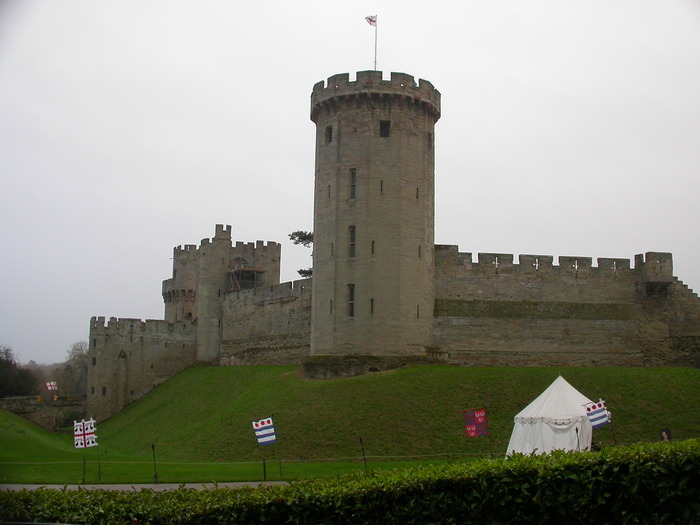
...and on to the castle. Warwick castle was built in 1068, but was only made of wood at that time. In the 12th century it was rebuilt in stone. In the 14th century (during the Hundred Years' War) the facade was fortified. The year 1590 saw the end of the line of Earls of Warwick, and the castle fell into disrepair. In 1604 the castle was given to Sir Greville. In the 17th century the grounds were turned into a garden, and it became a country estate. In 1978 it was purchased by the Tussauds (the waxworks people).
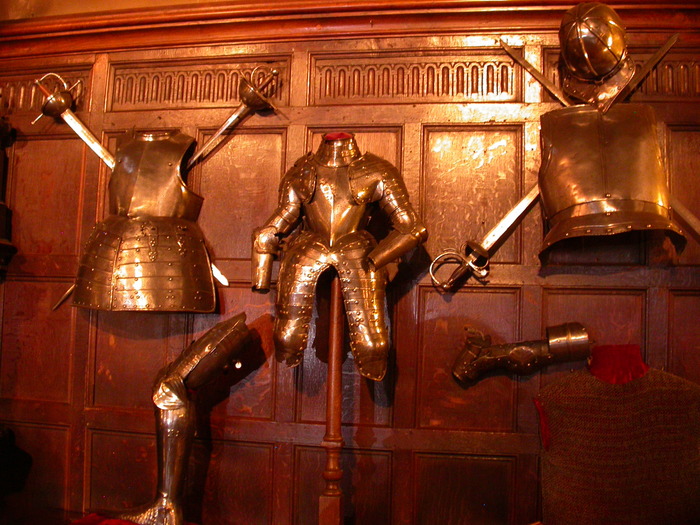
A full suit of armor, sized for a child. Child armor is extremely rare, as it is very expensive and children grow quickly. This is one of three known sets, and belonged to the son of Robert Dudley, the Earl of Leicester. Robert Dudley was a favorite of Queen Elizabeth, and was probably her lover for most of their lives. His son died in childhood.
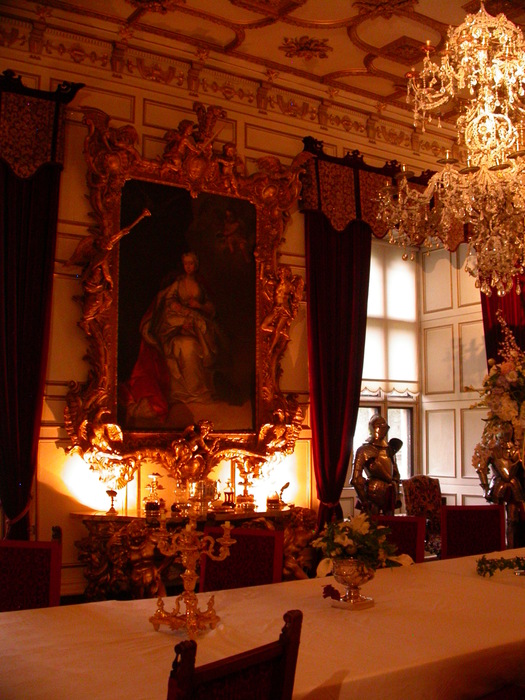
The decor in the place is rather baroque. It kind of works in the perpetual dim light of an English castle, though.
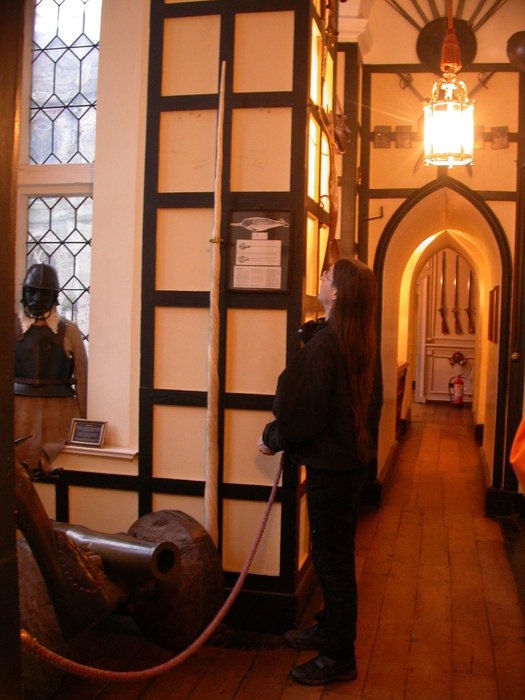
I don't know how this narwhal tusk came to be royal property, nor if it was advertised as a unicorn horn or for what it really is (the overgrown left incisor of a whale).
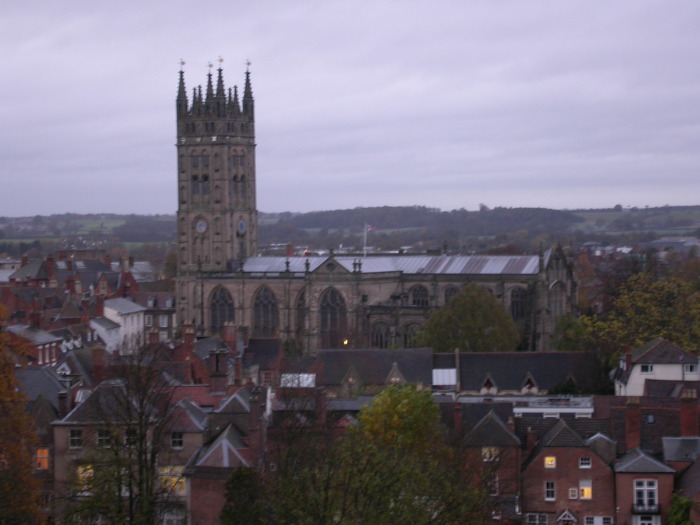
Saint Mary's. There foundations are about 900 years old. The current church was built in 1704, after the Great Fire of Warwick. The original was built in 1123, and was extensively remodeled (perhaps rebuilt due to disrepair) in the 14th century.
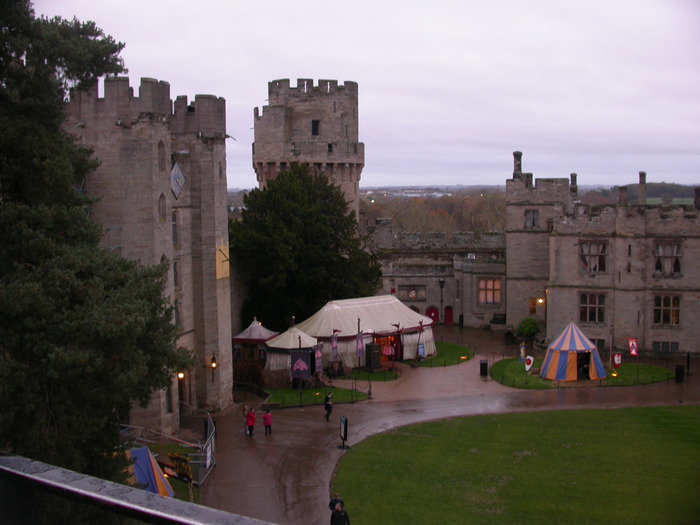
The ownership of the castle by Tussaud's has its drawbacks. There's a wax museum in the basement, and a cluster of tents with cheesy attractions for the little ones.
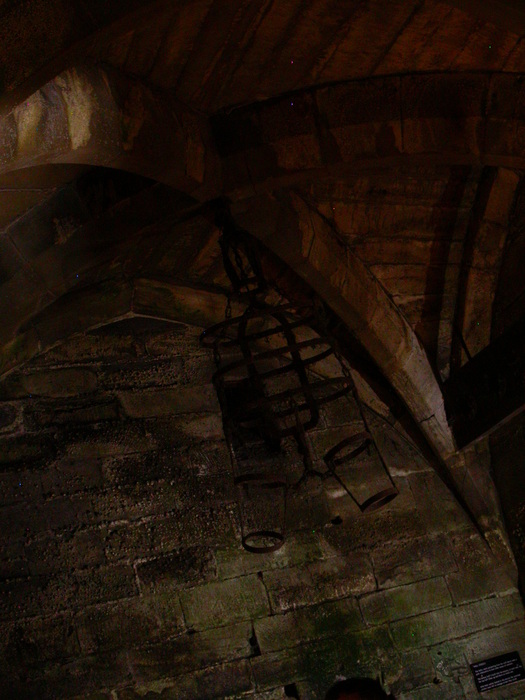
What's a castle without a dungeon? This one was built in the 14th century. It is extremely dark down here. The sign says, Drained only by the open gully in the floor and ventilated by one small shaft, it is chilling to learn, from inscriptions on the walls, that prisoners were sometimes kept here for many years.
If you didn't know, the thing on the ceiling is a crow cage... prisoners were placed inside it and then hung outside, in reach of birds and bugs but out of reach of any hope of salvation. A simple and incredibly nasty way to die. The dungeon had another feature for particularly despised prisoners: an oubliette. In French it means little forgotten place
, and consisted of a chimney-like pit with a grate over the top. Prisoners were lowered into this hole, the lid put on, and, as the name implies, forgotten.
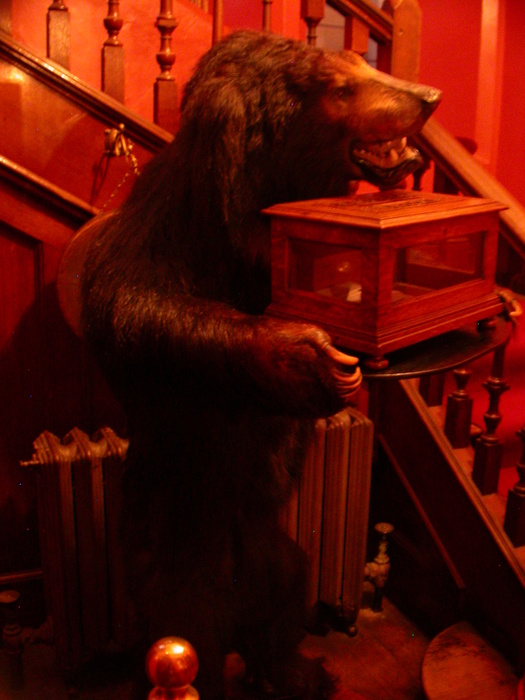
The castle also features a number of weird items which could only have been gifts bestowed upon the royal house. I'm not sure which kind of bear this was, so I can't guess at which country might have donated its carcass to present a box to the royal family.